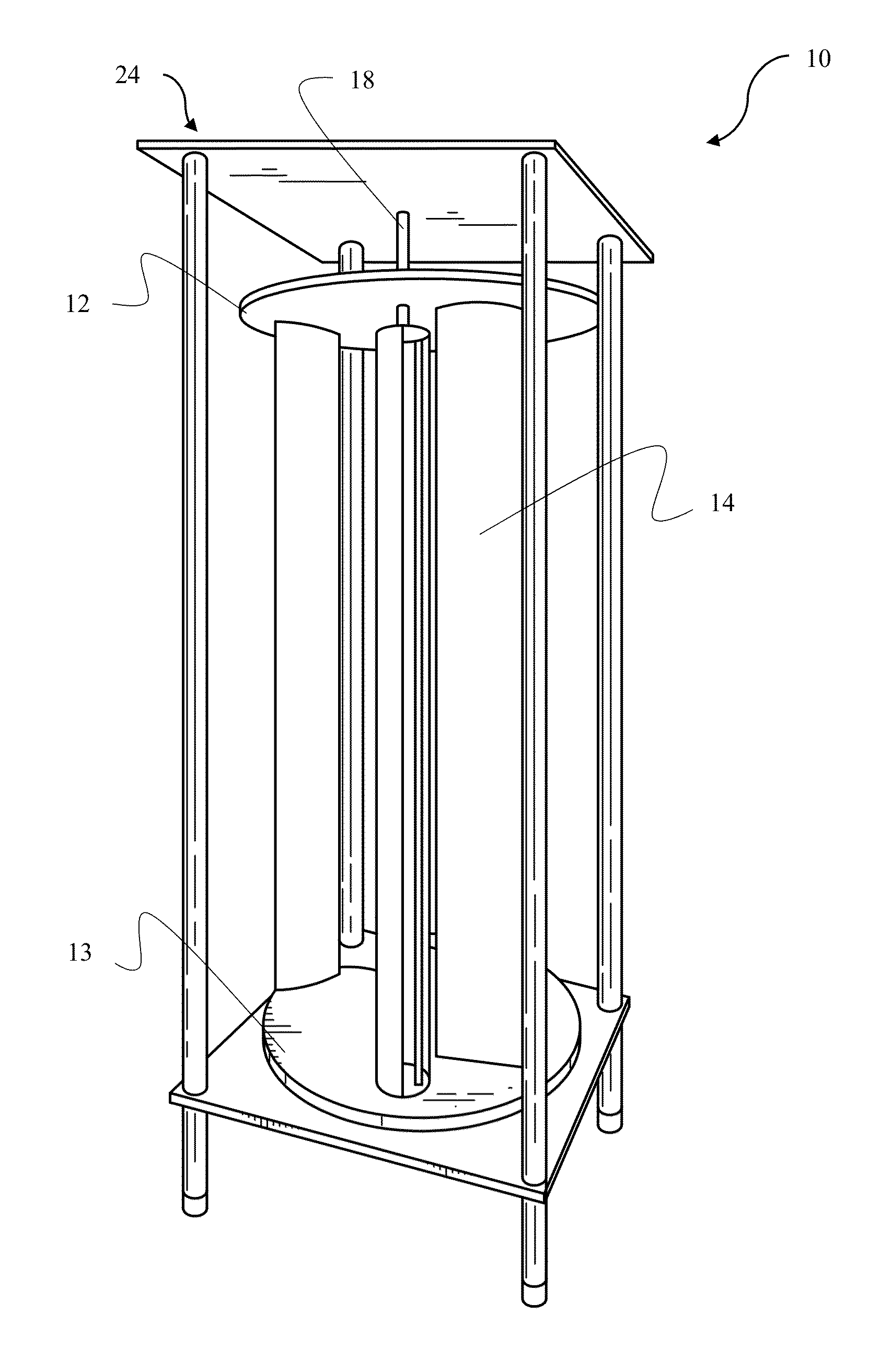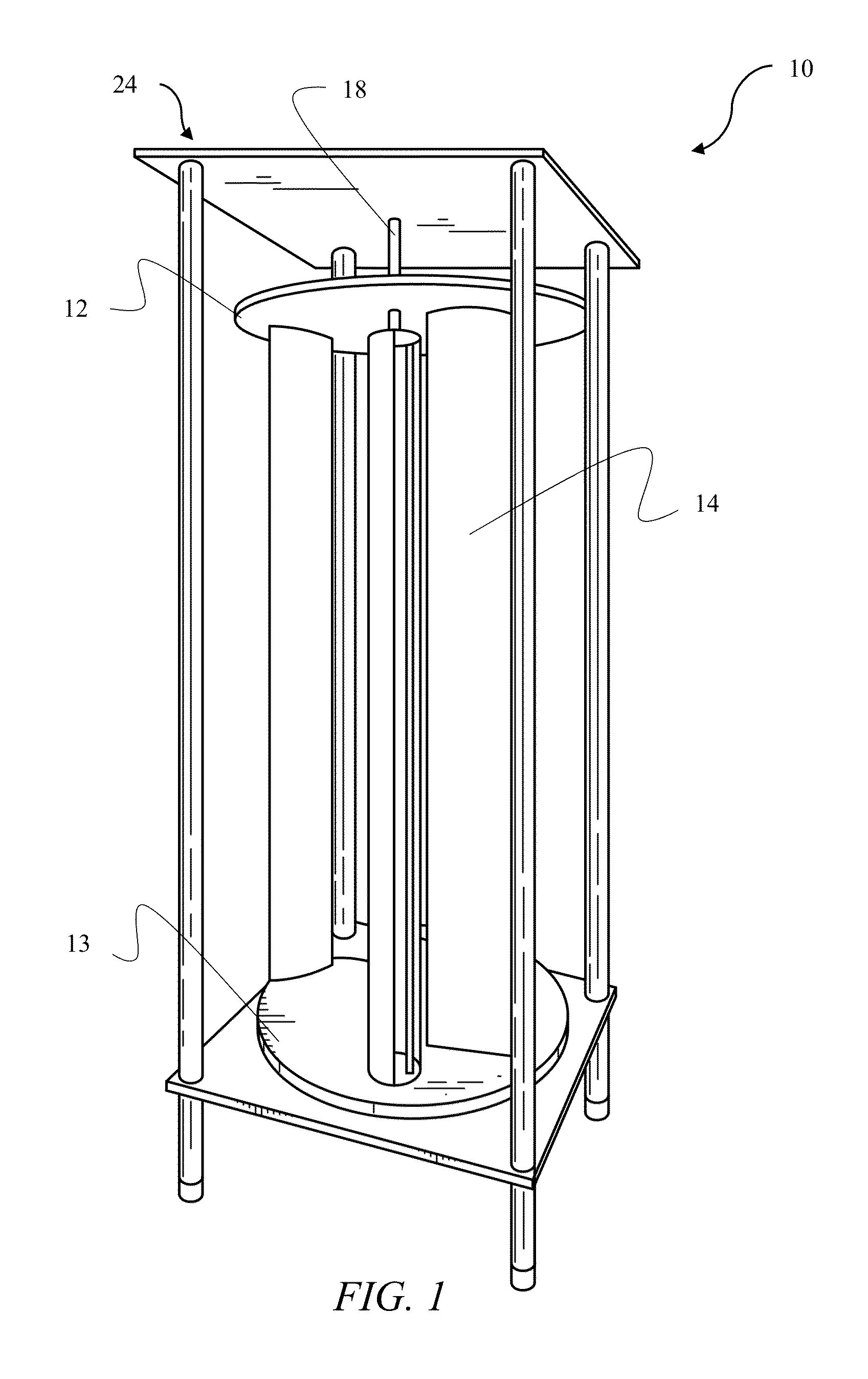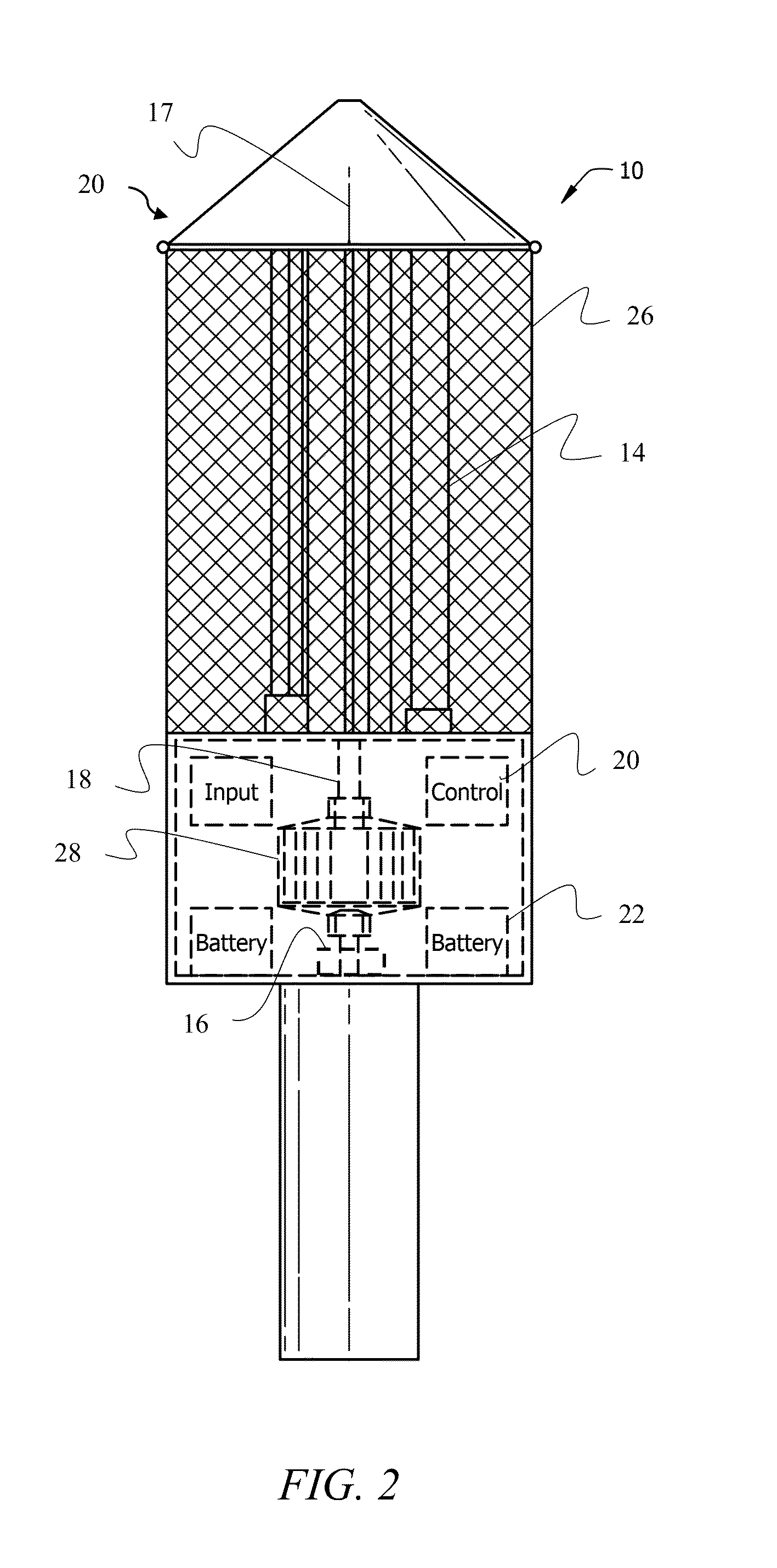Vertical axis wind turbine with cambered airfoil blades
a vertical axis, wind turbine technology, applied in the direction of electric generator control, renewable energy generation, greenhouse gas reduction, etc., can solve the problems of increasing the complexity of the design, increasing manufacturing and maintenance costs, and affecting the efficiency of wind turbines, so as to reduce the friction of wind turbines and reduce interference with radar signals.
- Summary
- Abstract
- Description
- Claims
- Application Information
AI Technical Summary
Benefits of technology
Problems solved by technology
Method used
Image
Examples
Embodiment Construction
[0040]FIG. 1 depicts an illustrative embodiment of the novel structure which is denoted as a whole by the reference numeral 10.
[0041]The novel vertical axis wind turbine (VAWT) 10 is depicted in FIG. 1. VAWT 10 includes a top plate 12 and a bottom plate 13. A plurality of blades 14 is disposed between top and bottom plates 12 and 14. Blades 14 are symmetrically positioned about a center axis 17 of bottom plates 12 and 13. A vertical shaft 18 is in axial alignment with center axis 17 and is attached to bottom plate 13. In an embodiment, vertical shaft 18 may extend up to or beyond top plate 12 providing additional structural support without notable effect on aerodynamic profile of VAWT 10.
[0042]Referring to FIG. 2, vertical shaft 18 is supported by a magnetic bearing 16. Magnetic bearing 16 significantly reduces frictional losses, and therefore, improves overall efficiency of VAWT 10. Magnetic bearing 16 may be a passive magnetic bearing utilizing permanent magnets or an active magne...
PUM
 Login to View More
Login to View More Abstract
Description
Claims
Application Information
 Login to View More
Login to View More - R&D
- Intellectual Property
- Life Sciences
- Materials
- Tech Scout
- Unparalleled Data Quality
- Higher Quality Content
- 60% Fewer Hallucinations
Browse by: Latest US Patents, China's latest patents, Technical Efficacy Thesaurus, Application Domain, Technology Topic, Popular Technical Reports.
© 2025 PatSnap. All rights reserved.Legal|Privacy policy|Modern Slavery Act Transparency Statement|Sitemap|About US| Contact US: help@patsnap.com



